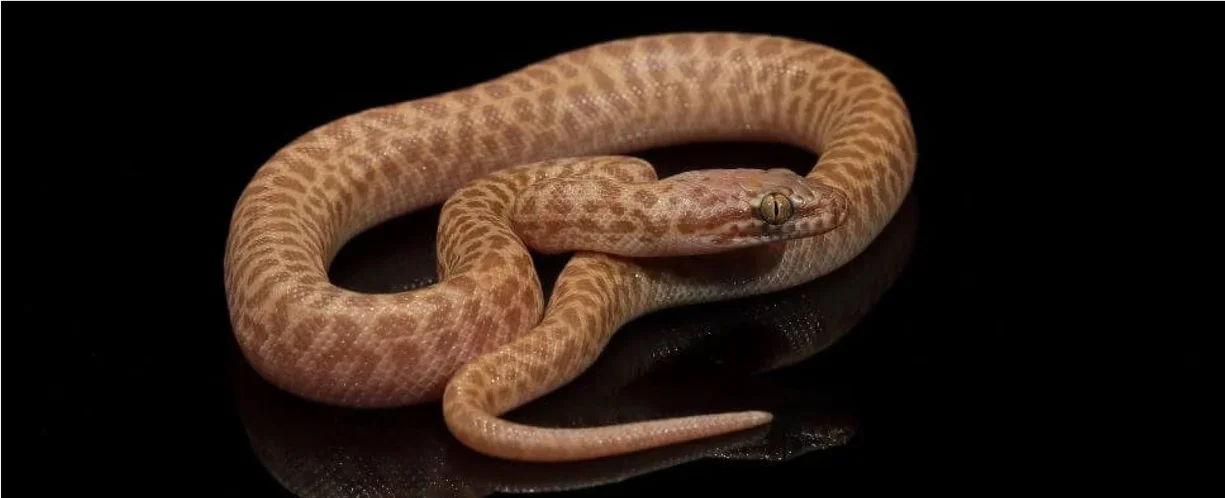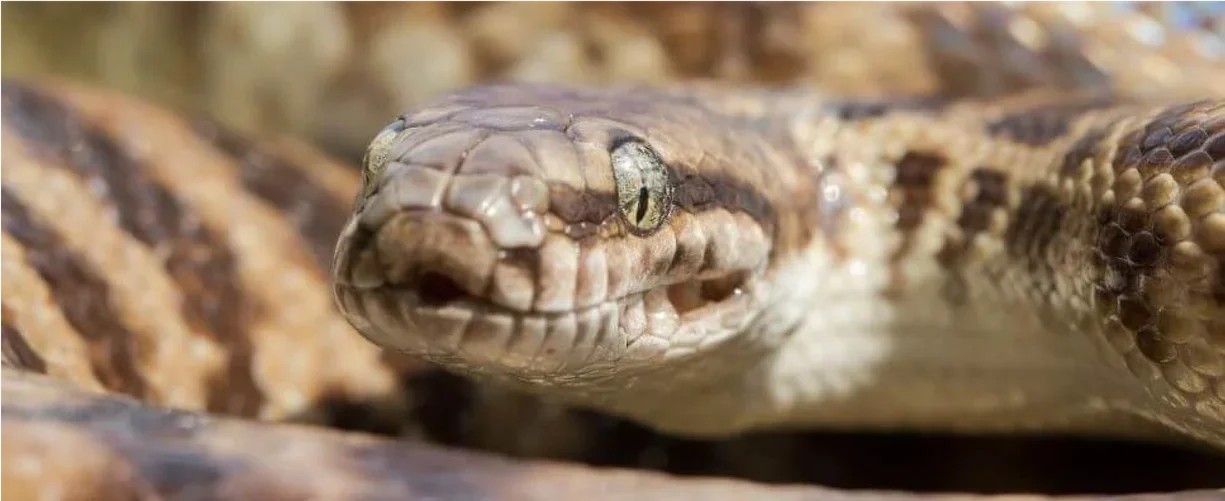Last Updated: 29/07/2025
Stimson's and Children's Pythons
Looking for the perfect beginner snake? Our guide explores two of Australia's best choices: the Stimson's and Children's Python. Learn why their docile temperament and manageable size make them ideal for new keepers. We cover everything from enclosure setup and feeding to safe handling.
Author: Dr Nicole Wynne BSc BVMS MANZCVS (Unusual Pets)
Reading Time: 16 minutes - medium read
While we can't keep common overseas pythons such as ball pythons in Australia, we have a wealth of native small python species that make excellent pets. These species include the Stimson's Python (Antaresia stimsoni) and Children's Python (Antaresia childreni). The Stimson's Python has recently been reclassified as a variant of the Children's python and are now regarded as the same species.
These small snakes are excellent choices for a first-time reptile keeper, and are of a manageable size, good temperament, and are forgiving in terms of enclosure and husbandry requirements.
Our comprehensive guide will detail all you need to know about keeping these beautiful pythons.
Reptile Licensing Requirements in Australia
All pet reptiles require a reptile keeping licence in Australia, and these differ from state to state, so ensure that you check your local requirements before getting any pet reptile. For Carpet and Diamond pythons, the licensing requirements are generally aimed towards beginner and intermediate keepers.
NSW - Companion Animal Keeper's Licence
ACT - Nature Conservation Act Licence
VIC - Wildlife Basic Licence
WA - Fauna Pet Keepers Licence
TAS - Illegal for private keepers in Tasmania
QLD - Standard Recreational Wildlife Licence
NT - No licence required for Stimson's and Children's pythons
SA - No licence required for just one Stimson's or Children's python, Basic Licence otherwise.
Facts and FAQs About Stimson's and Children's python

Place of origin
Australia
Life expectancy
15-25 years
Size
Small
Length range
75-85 cm
Temperament
Docile
Weight range
300-500 grams
Activity level
Medium
Active period
Night
Preparing for your Stimson's or Children's python

After getting your licence, the next step is putting together an enclosure for your python. As a small python, your snake will need a minimum of a 60 cm long by 30 cm high enclosure. They tend to be terrestrial, and so don't require a tall enclosure. Although you may be getting your snake as a juvenile, get an enclosure that suits an adult straight off, as it will save you from having to upgrade in the future. If your snake is still very small, you can house them in a plastic box within the main enclosure, which will allow you to keep the same heating and lighting system.
- Glass tank
- Plastic storage container with ventilation holes for transport
- Substrate
- Hides and other furniture
- Water dish
- Feeding tongs
- Appropriately sized feeder mice
- Enclosure cleaner
- Heat source
- UV light
- Thermostat
- An appointment at an exotics vet
Caring for Your Stimson's or Children's Python

Now that you've set up your enclosure, most of the hard work is done! The next thing to do is allow your snake to settle in and relax. In this time, make a booking with an exotics or reptile vet, as an initial checkup is important to ensure that everything is set up appropriately, and that your snake doesn't have any issues to look out for. The veterinarian will perform a full physical examination of your snake, and if you don't know the gender, they will be able to perform probe sexing to tell you if your snake is male or female.
And finally, the most important thing to remember when starting your reptile-keeping journey - enjoy! Reptiles are unique, interesting pets that have a lot of joy to give, and individuals will develop their own special personalities as time goes on. Pythons are rewarding pets, and many will become friendly and interactive, and learn to recognize their keepers as they grow.
Further Reading
Want to read more? Check out our other articles:
Beginners Guide to Reptile Care
History
Our experts continually monitor the health and wellness space and we update our articles when new information becomes available.
Wed 4 May 2022
Written by Dr Nicole Wynne BSc BVMS MANZCVS (Unusual Pets)Dr Nicole Wynne BSc BVMS MANZCVS (Unusual Pets)
Veterinarian, MANZCVS (Unusual Pets)
Dr. Nicole graduated from Murdoch University in WA in 2014, and immediately started working in exotics-only practice. She was also one of the few vets in Australia that would routinely see venomous snakes ranging from death adders to tiger snakes. Although Dr. Nicole enjoys seeing all exotic pets, her absolute favourite are rabbits. She passed her Australian and New Zealand College of Veterinary Scientists Membership (MANZCVS) exam in unusual and exotic pets in 2021.

